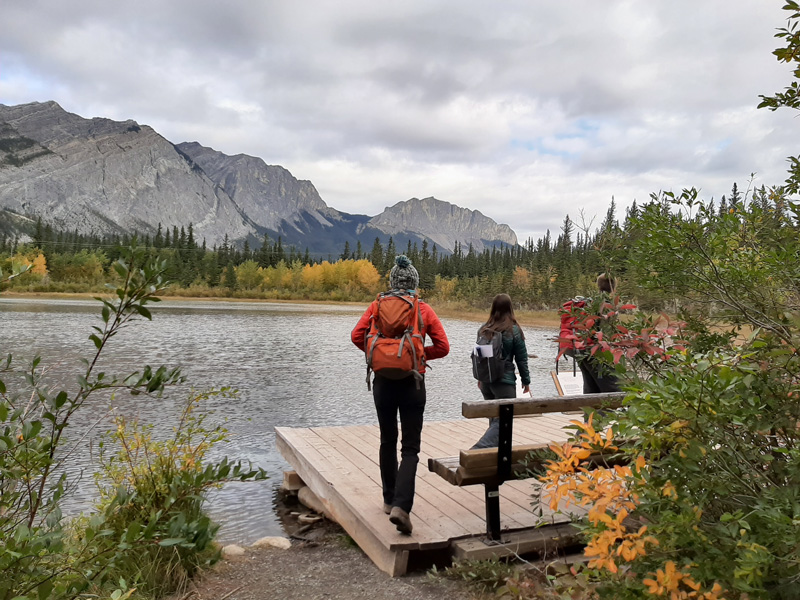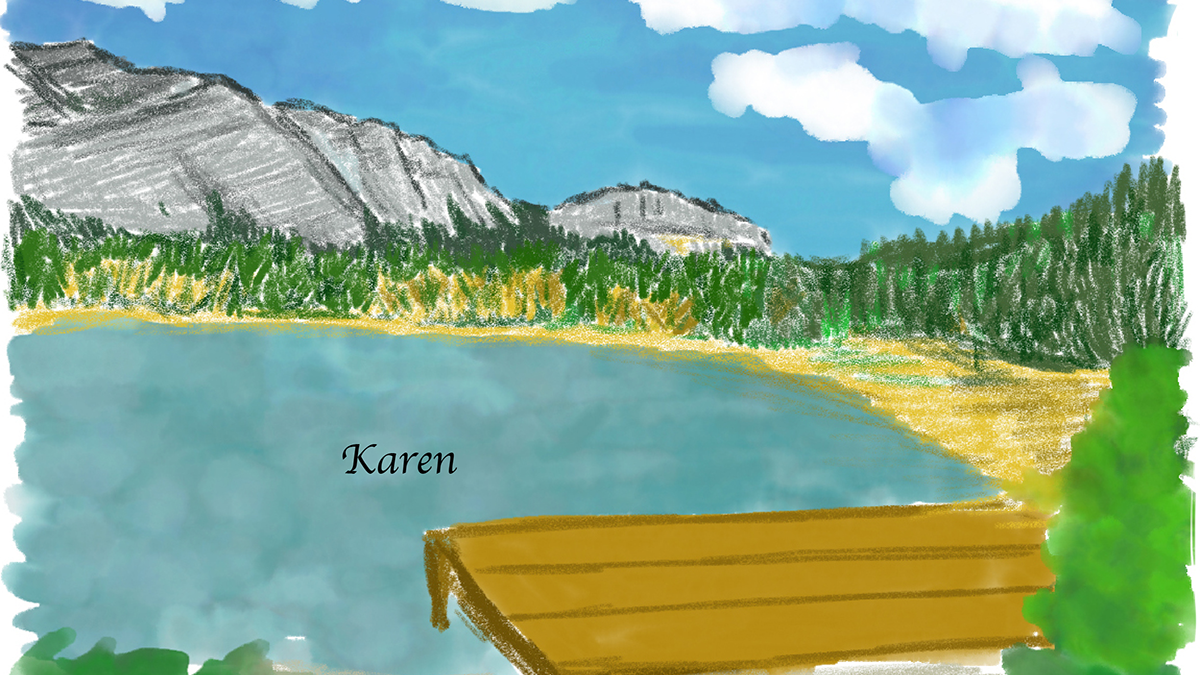As the COVID-19 pandemic began in 2020, Eva Enkelmann, a geologist at the University of Calgary in Alberta, Canada, needed to occupy her time. Instead of baking bread, she wrote a story about the life and adventures of a mineral named Lucy Calcite who lives on Mount Yamnuska in the Canadian Rockies near Calgary.
Lucy’s story became a chapter of Enkelmann’s new field guide for young adults, Rocky Voices: The Memories of Minerals That Form the Rocky Mountains. Enkelmann narrates the history of the Canadian Rockies through anthropomorphized minerals, faults, and even waterdrops, eschewing the litany of geological jargon that can clutter typical books in this genre. Instead, the series of stories can be read by children as their parents drive them to QR code–delineated locations nestled in the spectacular mountainous landscape of Alberta.
This conversation has been edited for length and clarity.
Eos: How did you get the idea for this book?
Enkelmann: I always had stories like this in my head. One day, I complained to my partner that I’m so tired of teaching always in these technical terms and that I’d much rather get the students excited and thinking about how the mineral would actually feel if buried 10 kilometers deep. He said, “Well, why don’t you write it down?” That evening, I wrote the first story.
“These locations are very accessible places where you can take your family and have a picnic or go for a little hike.”
Eos: For whom did you write the book?
Enkelmann: The audience is really families that want to learn about geoscience who don’t really want to have the technical [language]. These locations are very accessible places where you can take your family and have a picnic or go for a little hike. My motivation was really to get [students in] grade 6 and higher excited about Earth science, and also their families.
Eos: How did you manage to avoid jargon?
Enkelmann: The twist of the book is that I wrote it not from the perspective of an educator. I actually wrote the stories from the perspective of the minerals—how they experienced their lifelong adventures and how they changed over time. I see the minerals like people; we live in our neighborhood, and sometimes we adventure out and move to a different neighborhood.
Eos: The stories follow fossils like Emma Amphipora, minerals like Ray Clay, and others. Tell me about these characters and their personalities.
Enkelmann: The family name is always the mineral, or what they are. Some of the personalities are from people that I have come across. [Others] are based on the mineral; some minerals, like zircon, are extremely strong, so I gave [that character] a strong personality. Other minerals, like illite, are weak.
“Earth processes [do not] stop with rocks and minerals—everything is connected.”
Eos: I loved the story of Ray Clay, who preserves fossils such as Tim Trilobite. Clay is a “weak” mineral, and Ray is shy and prefers to be a wallflower. Yet he has many brilliant ideas throughout his life, like his secret animal archive. Can you talk a bit about him?
Enkelmann: It’s really the clays that allow us to see fossils. I made the story about Ray and his work to preserve those fossils. That was my own personal mission of spotlighting those people who are always overlooked.
Eos: Do you have a favorite story or character?
Enkelmann: Actually, no. This is a little bit like a mother with kids; you don’t have a favorite one.
Eos: Why did you choose to include chapters devoted to nonminerals like Karen Waterdrop, who begins as rain but then dives deep within Earth before emerging via a spring along a fault?
Enkelmann: There is this lake [Many Springs Lake] that is entirely fed by springs. I like to go there with students because it’s a great example of what a big fault zone can do. Earth processes do not stop with rocks and minerals—everything is connected. I really wanted to bring a story that is much shorter in terms of the timescales. Most of the mineral characters are millions of years old, and this shows another aspect of the process.

Eos: Why do you think this kind of anthropomorphic storytelling will help with science outreach?
Enkelmann: There are books and movies about historical fiction where we learn something about a certain place or time in history.… It’s written from the perspective of how people experienced that time, [unlike a] history textbook, where you [just] get the facts. This book is an example of doing something similar.
Eos: Are you planning to incorporate your book into your own teaching?
Enkelmann: I actually just did! I gave my students the first two stories—Lucy Calcite and Charles Zircon—[and tasked them with] finding the section…about microstructure processes and, then, explain what exactly happens.
I do have a field school that is coming up in June. We will probably visit some of those locations. If the situation comes, we might read a story. It’s going to be a camping trip, so that will be in the evening sitting around campfires.
Eos: What advice do you have for educators teaching similar classes? Or even those who are trying to find creative ways to communicate?
Enkelmann: Step back and critically asked yourself, “Is that word important?” You need to simplify it. Try to extract the processes.
—Alka Tripathy-Lang (@DrAlkaTrip), Science Writer

